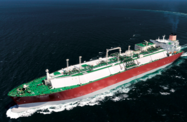Qatar has merged its two majority state-owned liquefied natural gas (LNG) producers and stepped up output, with the aim of increasing its competitiveness in global markets.

On January 1 officials announced the establishment of a new company, Qatargas, following the successful integration of Qatargas and RasGas, the world’s largest and second-largest LNG producers, respectively.
The two companies, which are subsidiaries of Qatar Petroleum (QP), account for all of the country’s gas production and processing capacity, with the former having an output capacity of 42m tonnes per year and the latter approximately 37m tonnes.
By integrating their resources and capabilities, Saad Sherida Al Kaabi, president and CEO of QP, told local media the country was aiming “to create higher value for… stakeholders, and enhance the competitive position of the gas industry”.
While the structure of Qatar’s LNG production and export entity has changed, its partnership arrangements with foreign energy firms such as ExxonMobil, Total and Shell – which had stakes in the operators before the merger, along with majority shareholder QP – will continue.
Merger to reduce costs, ease negotiation processes
The merger, which has streamlined the entirety of Qatar’s LNG operations, from distribution infrastructure to management and marketing, will result in significant efficiency and cost savings. By removing duplicate services and strengthening economies of scale, Qatargas is expected to save up to QR2bn ($549.5m) annually, according to official estimates.
The negotiating process for new contracts with global clients will also become more straightforward as a result, according to executives. This is a matter of increasing significance for the operator, as a number of long-term contracts will come up for renewal in the coming years.
Increased LNG capacity to support broader economic growth
The consolidation of production and management apparatus comes as Qatar moves to reinforce its role as the world’s largest gas supplier.
After lifting a 12-year, self-imposed moratorium on development of its main North Field in April 2017, Qatar announced in June that it would boost output by 30% to 100m tonnes per year.
The North Field deposit already accounts for the majority of Qatar’s gas production and 60% of its export earnings, a position that will strengthen following the capacity increase.
The expansion should also provide further opportunities to external contractors at all stages of the project development chain, from planning and design through to construction, while also boosting demand for logistics and service providers.
The international financial sector could also benefit; in January Al Kaabi told local media that while the development could easily be funded internally, raising some finance from debt markets was a possibility.
Production boost comes amid strong global competition
Efforts to increase LNG production and streamline operations are expected to strengthen Qatar’s position in global energy markets at a time when other countries are looking to increase their market share.
Although the country dominated the LNG sphere in 2016, with a 30% share of global exports, according to the International Gas Union, the development of new fields off Australia’s west coast could see its outbound shipments match Qatar’s this year; Australia’s exports are expected to rise to 77m tonnes during FY 2018/19.
The Pacific nation is a key competitor as an LNG exporter to Asia, as its location offers lower shipping costs to the region. Its fields are also coming on-line at a time when Chinese demand for gas products is increasing, as the government shifts its energy policy away from coal and towards cleaner fuel alternatives.
Output from US fields is also expected to increase significantly within the next decade, and, closer to home, Iran is looking to expand capacity on its share of the North Field, which it calls South Pars.
Iranian officials have targeted lifting natural gas production from 800m to 1bn cu metres per day as upgrades come on-line throughout the year.
Although Qatar may surrender its position as the global leader in LNG exports in the near term, the increased capacity from the expansion of the North Field, which should be operational between in the next five to seven years, will help it to level the playing field with competitors by the mid-2020s.


